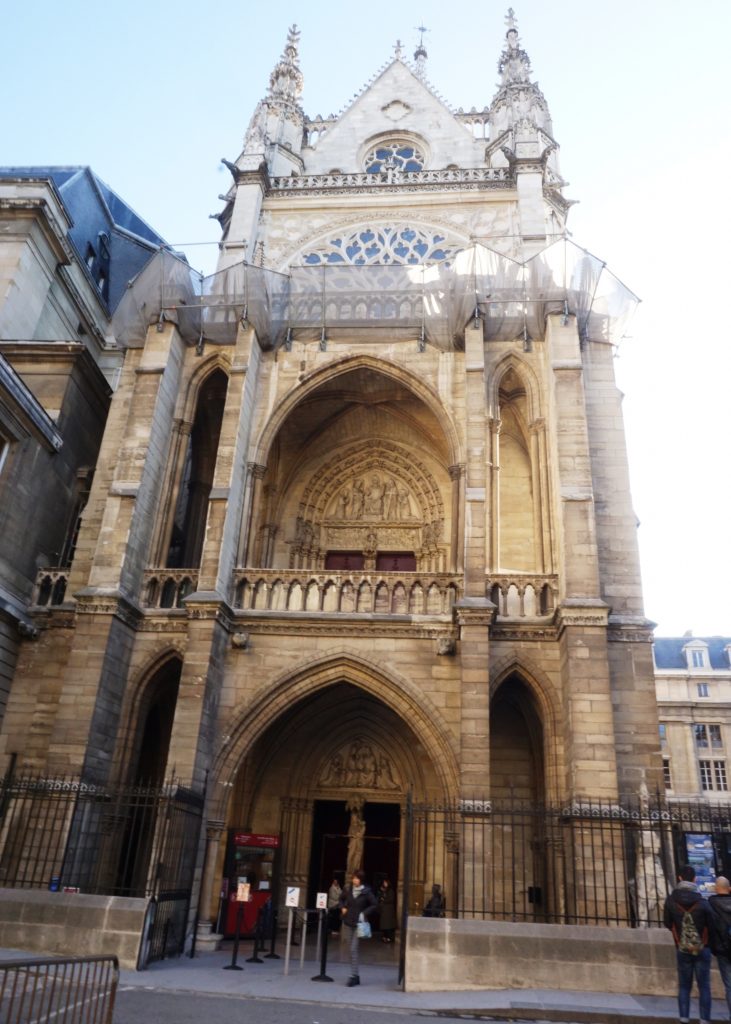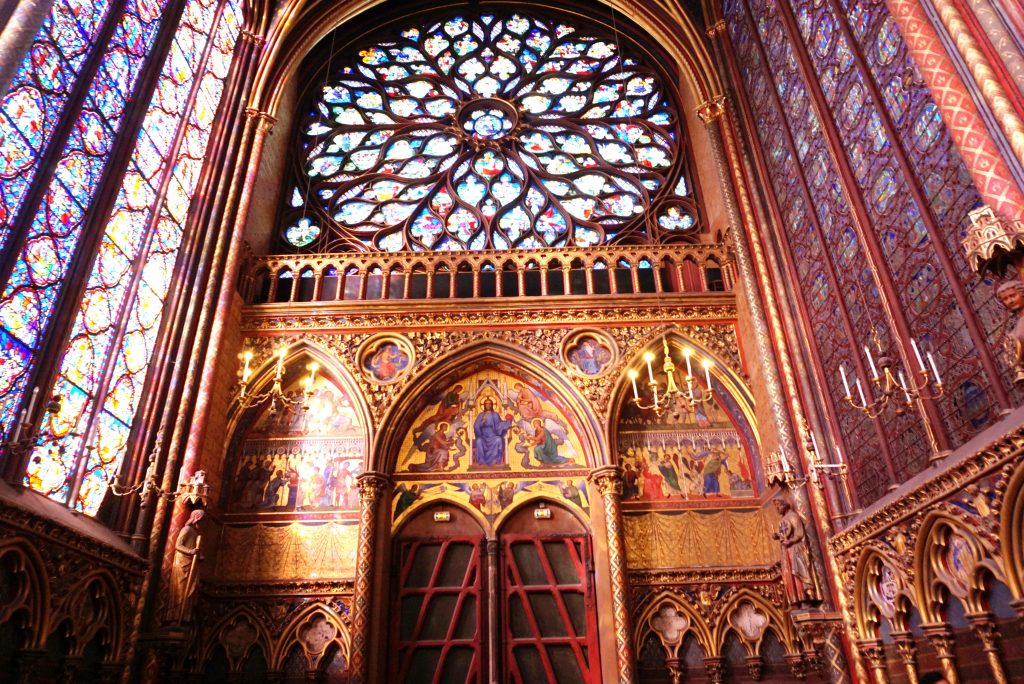Saint Chapelle is a gem of high Gothic architecture. I got an opportunity to sneak-peek into 12-century gem of Sainte-Chapelle.
The Palais de la Cite was residence and seat of Royal power from 10th to the 14th centuries and housed the Conciergerie and Sainte Chapelle which are now part of the Palace of Justice.

Historical Significance of Sainte -Chapelle
The Sainte Chapelle was built between 1242 and 1248, in accordance with the wishes of Louie IX (King from 1226 to 1217 and the future Saint Louis) the house of relics of The Passion of Christ. The most famous of these relics was Crown of Thrones, acquired in 1239 for a sum that greatly exceeded the cost of building the chapel itself.

The religious and political influence of Sainte -Chapelle
The Holy Relics(parts of saint body, or objects that belonged to saints) has belonged to the emperor of Constantinople since the 4th century.
In purchasing them, Louis IX added to the prestige of both France and Paris which, in eyes of medieval Europe, became a “New Jerusalem”
and hence the second capital of Christianity.

Throughout the Revolutionary period,
The Sainte Chapelle, which was a symbol of royalty by divine right, suffered a great deal of damage, although the Steel with glass rose windows remain intact. From 1846 onwards, a huge wave of restoration work was carried out on the building, giving it its current appearance.

Two sanctuaries, one on the top of the other
From the beginning, the relics where displayed and worshipped in the Upper Chapel. Only The King, and his close friends and family, and the Karen’s leading the services entered it via the outdoor terrace, which at the time was connected to the palace. The lower Chapel was a place of the worship for Palace staff.
The best silica type layout with semicircular simple. It was to be used as a model for other Holy chapels, those of Vincennes and Chateudun

Sainte -Chapelle: The lower Chapel
The visitor is created by the Statue of the Virgin Mary, the centuries Patron Saint, at the portal.
Inside, polychrome decoration, like the carved decoration in the porch, dates back to 19th century Restoration work. In the apse on the left, above the door to the former sacristy, is its 13th-century Fresco defecting the Annunciation.
This is the oldest wall painting in Paris.
The low vault is held up by openwork struts linking the aisle columns to the lateral walls. These walls are decorated with blind trefoil arcature and 12 medallions featuring the apostle.

The vaults fleur-de-lys on the Azure background I also find on the column, alternating with Towers on the purple background which was arms of Queen Blanche of the castle, Louie IX mother.
Sainte -Chapelle: The Upper Chapel
This is truly monumental and sumptuously decorated reliquary. Sculpture and Windows combined harmoniously to glorify the Passion of Christ and create a feeling of entry into the Heavenly Jerusalem, bathed in light and colour.
The Chapel post-match of even its early fame to its stained glass Windows.

The 1,113 scenes depicted in the 15 stained glass windows tell the story of mankind from Genesis through to Christ resurrection. 14 of the windows depicting episodes from the Bible, should be read from left to right from the bottom upward.

